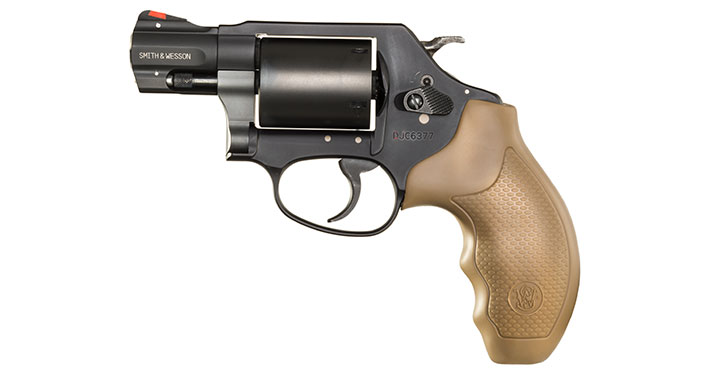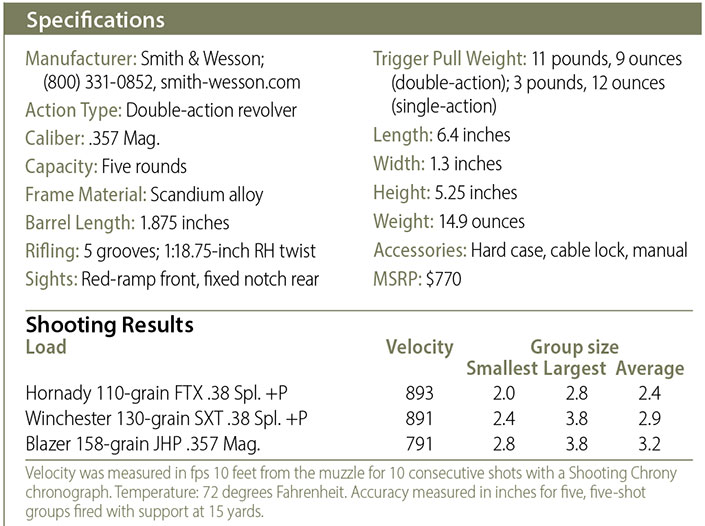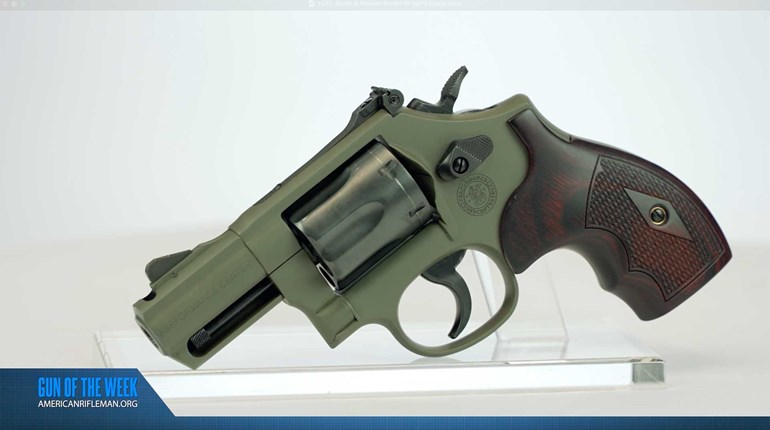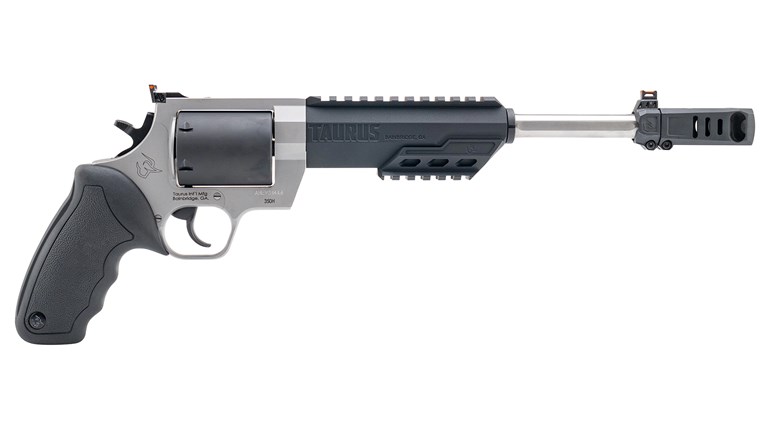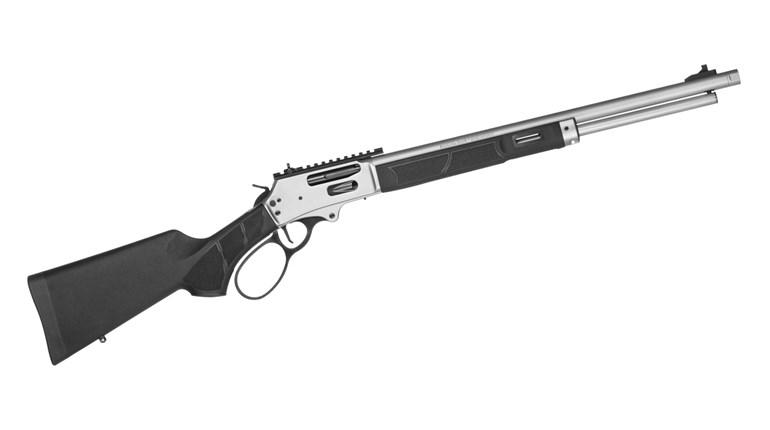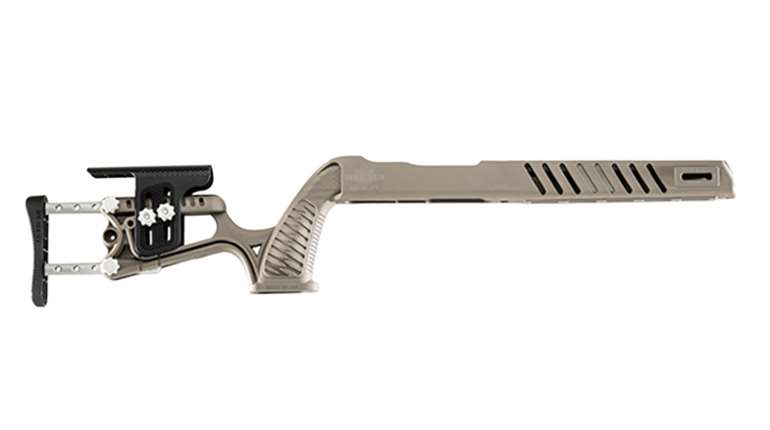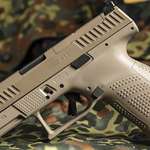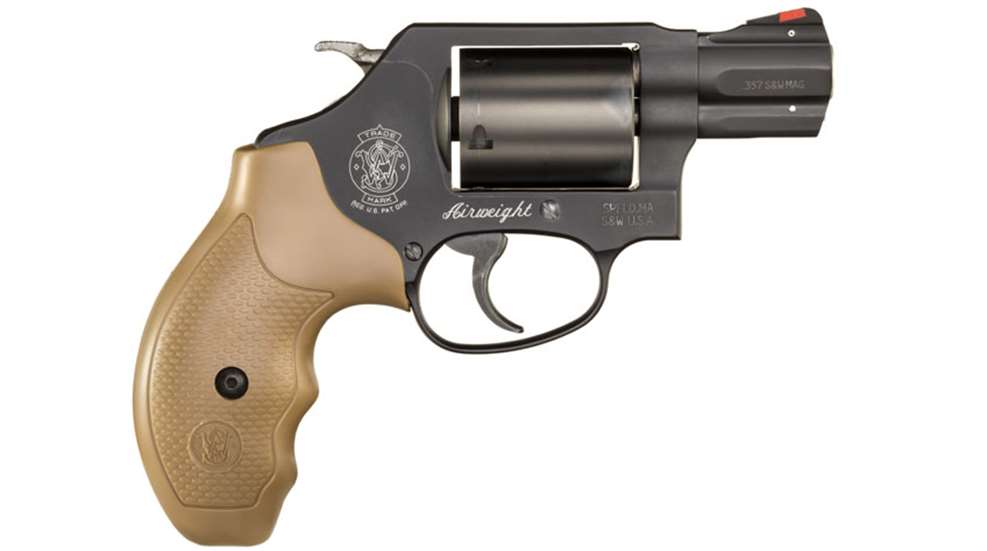
As long as I can remember, the definition of a pocket pistol wasn’t really a pistol, but rather a Smith & Wesson small-frame revolver. While small-frame semi-autos may be making inroads into the CCW market, they’re competing with a product that’s been around since the middle of the 19th century. Undeterred by these increasingly popular self-loaders, Smith & Wesson has come out with its Model 360 Airweight in .357 Mag., a new model five-shot J-frame and it seems to challenge the assumption that little wheelguns have little to offer the modern, well-armed citizen.
Immediately visible changes on the new Smith & Wesson Model 360 Airweight include an unfluted cylinder, the “old-fashioned” red/orange plastic insert in the ramped front-sight blade, an external hammer and longer grips that will accommodate all three grasping fingers of the shooting hand. Besides lacking flutes (which adds a small amount of weight), the cylinder is made of stainless steel. These two factors allow the small gun to handle .357 Mag. loads and add slightly more than 3 ounces to the overall weight compared to the Model 360 PD.
I don’t know how much the stainless steel contributes to cost savings, but at $770 the Airweight’s suggested retail is $250 less than the Model 360 PD. The frame is Smith’s scandium alloy, which keeps the gun’s overall weight to just less than 15 ounces—a manageable load for pocket carry. With a barrel length of 1.875 inches, the ejector rod is, by necessity, short, but protected by the usual shroud. At full stroke, neither .357 Mag. nor .38 Spl. cases will fall clear of the cylinder. Practice your speed reload to include a vigorous tap on the ejector rod with the muzzle pointed up.

My first impression of the grips on the Smith & Wesson Model 360 Airweight was that they were too long for a pocket pistol. As I worked my way up the power scale of the test ammo I began to rethink that. Having a secure place for the pinky finger really helped in maintaining my grip and controlling the firearm through a string of fire. I don’t know whether pocket carry will work in your wardrobe; trouser pockets vary. My jeans’ pockets are too small, but the pockets on a pair of pants from Constant Companion have ample room. Shorter aftermarket grips (some with lasers) are available that will facilitate pocket carry. However, a smaller “handle” may change your recoil tolerance, perhaps forcing you to select lower-power ammo with less recoil. My most-comfortable carry technique was using an IWB Galco Model RG 158. It tucked the long grip in close to the body with no telltale printing.
After considerable time spent with all manner of Smith & Wesson revolvers, I’m comfortable with the traditional red insert in the front sight blade. It’s not a true night sight, but it’s helpful in low-light conditions. More importantly to me, the 90-degree corners on both front and rear sights allow for a better traditional sight picture than rounded beads and various size troughs. For smaller targets or targets at longer distances, this greatly improves one’s ability for precise bullet placement. Personally, I could use a slightly wider rear notch, but I can work with the sights on the new Smith & Wesson Model 360 Airweight.
Shooting groups for accuracy, I used a “conventional” bullseye-shooting sight picture (desired point-of-impact on top of the front-sight blade,) and shot single action. The resulting .38 Spl. groups were 8 to 9 inches low while the Blazer .357 Mag. was about 3.5 inches low. When I shot double action and tried for some speed, groups with both calibers were noticeably higher. Your results may be different, but that front-sight blade could be a bit shorter for me.
I’ve heard a lot of BS over the years regarding the appropriateness of an exposed hammer on a double-action revolver like the Smith & Wesson Model 360 Airweight. While there isn’t time to cock a revolver in most defensive scenarios, when time and distance permit, why wouldn’t one take advantage of a feature that allows you to change your trigger pull from 10-plus pounds through .5 inch of travel to 3 or 4 pounds through less than .1 inch of travel? Shooting Illustrated Field Editor Ed Head and I have discussed this while working with revolvers on Gunsite ranges, and under certain circumstances, feel that perhaps 20 yards would be a reasonable distance to consider going single action.
Snagging the external hammer on a cover garment during the drawstroke is a possible problem with any revolver so equipped. However, accessing a pocket pistol is not taught as a speed maneuver, but rather as a stealth move. Getting your hand on the gun before the shooting starts requires you to be aware of external threats and prepared to handle them before they’re out of control. With your hand on the gun in your pocket, simply cover the hammer with your thumb as you draw. Don’t cock it; just prevent the hammer from snagging on anything as it emerges from the pocket and enters the fight.
I’ve been spoiled lately by the incredibly smooth trigger pull on the newer-model, double-action revolvers. The 360’s double-action pull seemed heavy and a bit inconsistent. I suspect that will “smooth out” with more rounds, but if you’re taking the gun into harm’s way immediately, you might consider having the trigger tuned. Overall, the Smith & Wesson Model 360 Airweight is a quality piece of hardware that will provide comfort when traveling to questionable locations.
